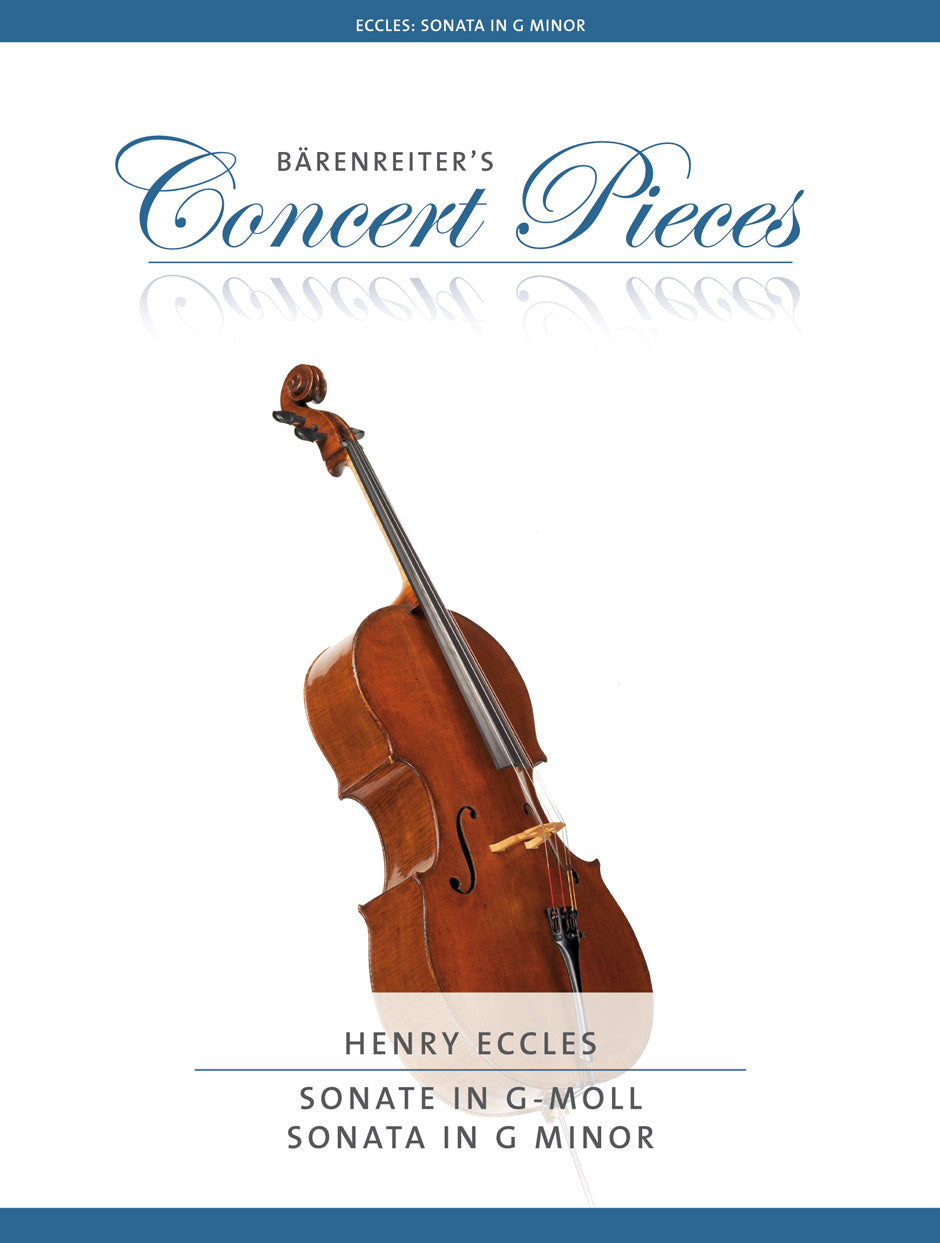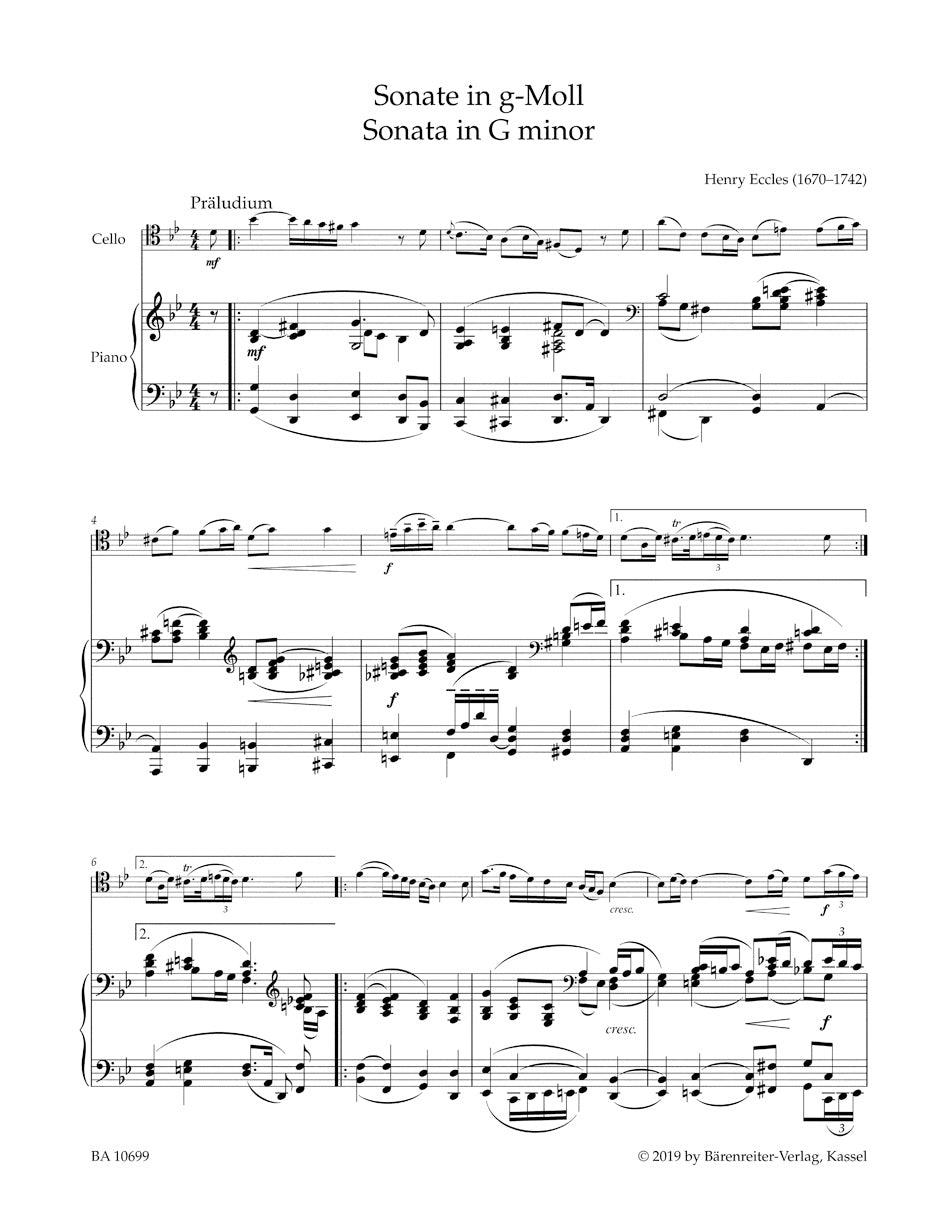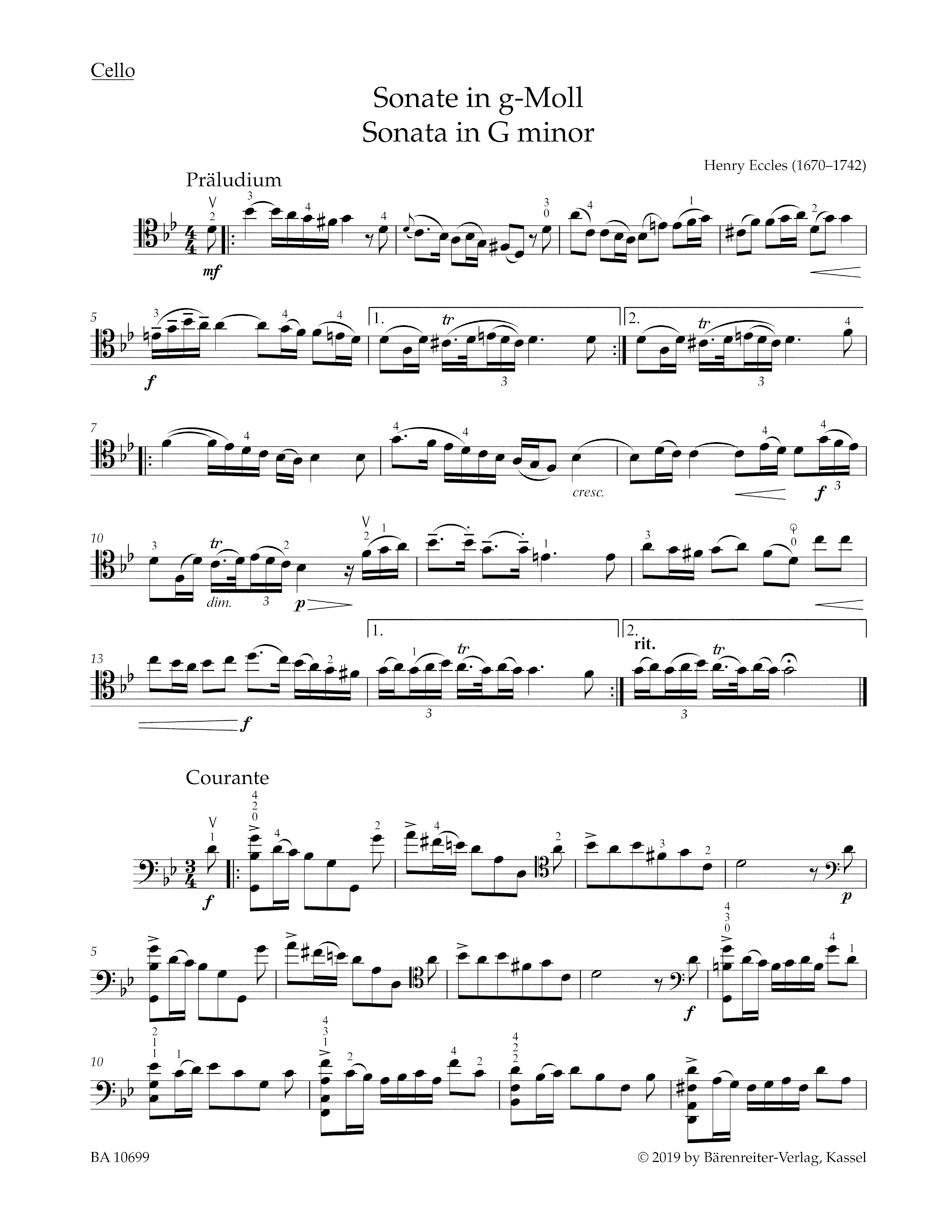


BARENREITER - 345062
Eccles Sonate g-Moll
Composer: John Eccles
Publisher: Bärenreiter
Instrumentation: Cello
Binding: Stapled
Dimensions: 11.8 in x 9.1 in
Pages: 17
Eccles Sonate g-Moll
Juilliard Store
144 West 66th Street
New York NY 10023
United States
Choose options
Eccles Sonate g-Moll
Juilliard Store
144 West 66th Street
New York NY 10023
United States
Eccles Sonate g-Moll
Juilliard Store
144 West 66th Street
New York NY 10023
United States
Editor: Sassmannshaus, Christoph
Orchestral scoring : Vc,Piano
Product format: Performance score , Part(s)
Binding: stapled
Pages / Format: 7/10 S. - 30,0 x 23,0 cm
This sonata is written in baroque sonata form, consisting of a slow introduction followed by three dance movements. The dance movements are based on court dances from the period. Students can listen to “Courante”, “Sarabande”, and “Gigue” movements from any of the 6 Unaccompanied Bach Cello Suites and compare them to the corresponding movements in the “Eccles Sonata”.
This sonata is an important stepping stone to more advanced techniques. It requires brush stroke and martelé with string crossings. The work also requires shifting into thumb position. These techniques will prepare the student to advance to more challenging works such as Saint-Saëns “Allegro appassionato” and the cello sonata repertoire.
